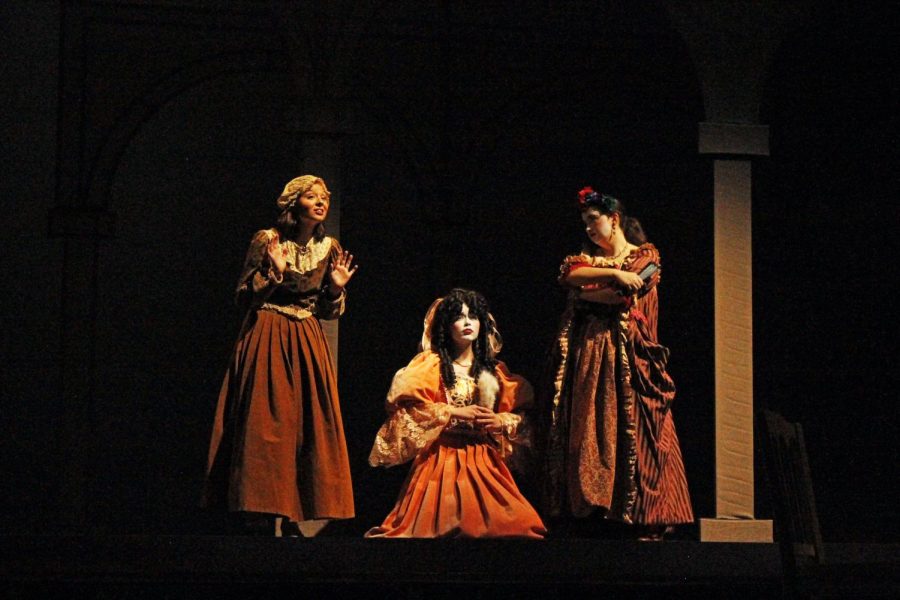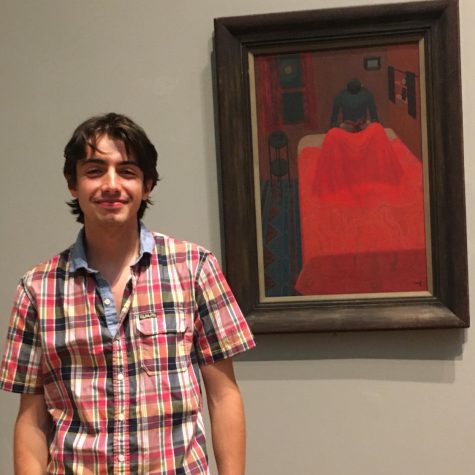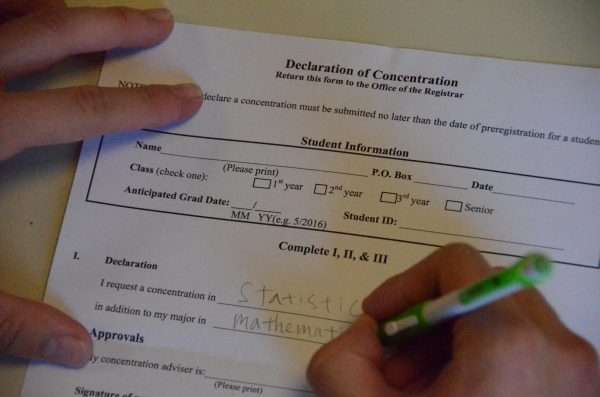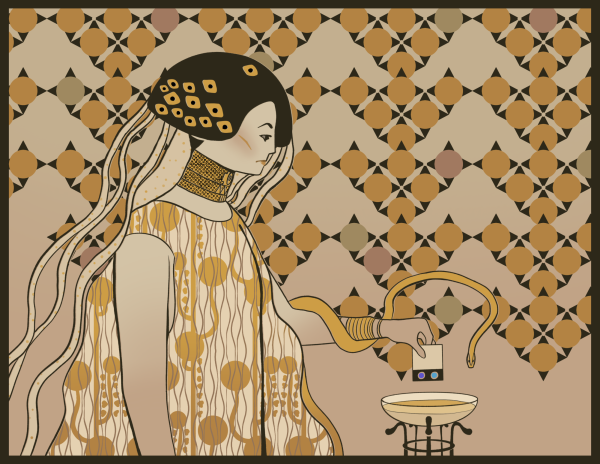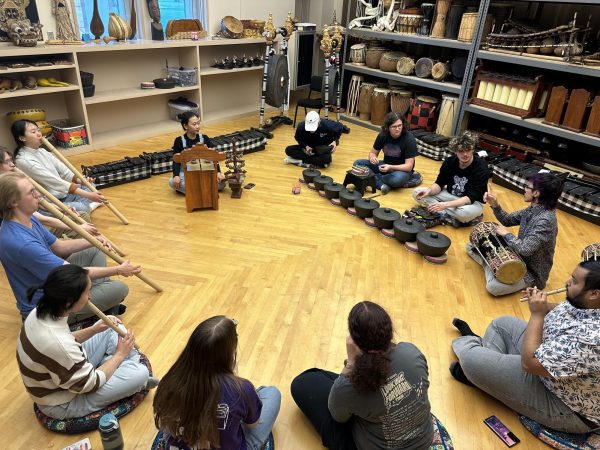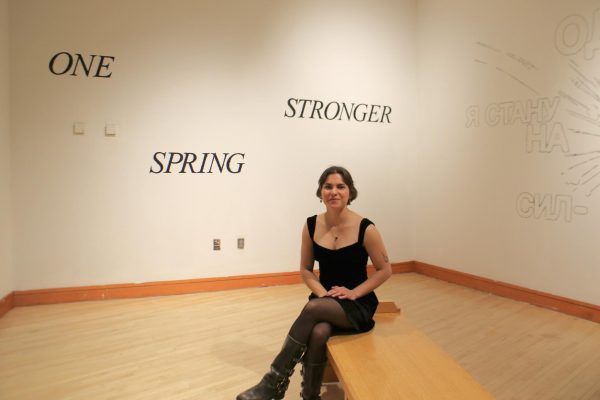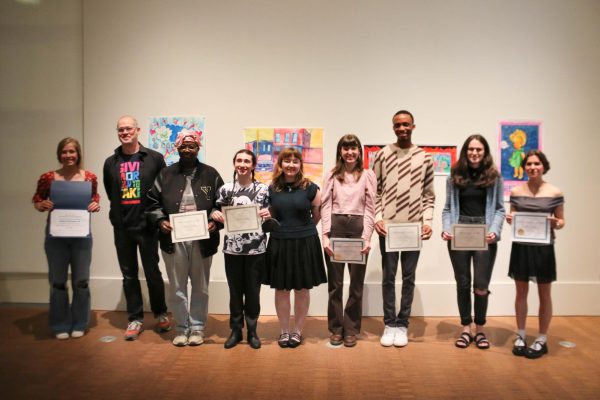“House of Desires” queers 17th-century theatre
Cast members of “House of Desires” during a dress rehearsal.
November 21, 2022
Actors styled in colonial Spanish garb call out to one another and the audience, enacting a drama of interwoven love affairs and court intrigue. Patterns of light are projected onto a cloth architectural backdrop, giving the stage depth and movement. Musicians dressed in nuns’ habits sit off to one side, accenting the dialogue with quick bursts of sound; sometimes a full band joins in, filling the entire theater with its rollicking music. This is “House of Desires (a queer comedy)”, produced by the Grinnell College Department of Theatre, Dance, and Performance Studies (THDPS).
House of Desires has a long history, first performed in 1683 in Mexico City. It was written by Sor Juana Inés de la Cruz, a Mexican writer, philosopher, composer, poet, and Heironymite nun—seen today as one of the most important literary figures of the Spanish colonial period. Director Karie Miller, visiting assistant professor of theatre, dance, and performance studies, said that she chose the play because it resonated with her students in past classes.
“This time last year I was reading it with my theatre history class, and students really enjoyed it. When we [the THDPS department] were talking about the season, with the other things we were doing, it made sense to do a period play, and this one is special because it’s written by a Mexican nun from the seventeenth century,” Miller said. “Sor Inés is awesome, and there’s a lot about gender that relates to now, so it was just a really good fit.”
The action of the comedy revolves around two couples, thwarted in their love by circumstance, political intrigue, and societal norms. On its website, the THDPS department calls the play “a subversively feminist comedy featuring jealous lovers and mistaken identities, queer themes, and period costumes.”
Miller credits the play’s nuanced portrayal of gender to Sor Inés’s Mexican background. “The Catholic Church had a big presence, and its perception of gender was incredibly binary, but the indigenous population in Mexico was far more fluid, and she’s sort of responding from one side to the other. That is very present in our production. She’s queering the form that she saw in her peers, and we’re using that queering to go even further and queer the style.”
Despite its significance and enduring cultural resonance, House of Desires is a rare sight for modern audiences, especially in the English language. “It’s not done very often,” Miller said. “We’re using one of the few translations, from the Royal Shakespeare Company’s 2004 production.”
Adapting the play to the stage at Grinnell, Miller emphasized the work done behind the scenes in order to reach out to the audience in a compelling way. “When you produce a play, you have to ask who is telling the story, and for us the nuns are telling the story. That’s the framing device on the outside. Having the nuns be the producers means we’re owning the fact that we’re putting on a play right from the top. We’re not hiding it, it’s not realism, and the style isn’t realism anyway. That opens the door for much more theatricality.”
She said that, due to its age, House of Desires is different from the dramatic works that actors and audiences are used to, and thus can at first be difficult to relate to.
“It’s a long play, and it’s in a certain style,” she said. “I think the hardest part can be finding the style and getting control of these characters that are larger than life. It’s not people just talking to each other, it’s people talking to the whole audience and bringing the whole audience along, and that can feel awkward.”
Still, Miller is happy with the production, and says that rehearsals went well. “This is a really smart cast, and they’re very fun,” she said. “I think it’s all coming together in a fun and exciting way.”
Miller and the rest of the production team have worked hard to make the performance relatable and engaging for audiences while retaining its authenticity. She highlighted the use of forced perspective—a technique popular in Renaissance theater which employs exaggerated perspective to create artificial depth—as well as creative lighting. “We’re playing with visibility, using walls that can be seen through. We project light onto or through them, so the characters in the play can’t see one another. It’s literally like they’re in the dark groping around for each other.”
Song also featured prominently in the production. A four-person student band was always onstage, punctuating the dialogue with their instruments. In addition, the Grinnell Jazz Ensemble performed a mashup of the baroque music contemporary with House of Desires and Mexican punk music from the 1980’s and 90’s, adapted by Associate Professor of Music and Director of Jazz Ensemble Mark Laver, to accompany lyrics from the script. “Here, again, we’re playing with the queering of music,” Miller noted.
Watching House of Desires, audiences experienced a unique blend of queer Renaissance theatre, innovative technical work, and a highly original musical score. The play ran for three performances from Nov. 18-20 in the Roberts Theatre at the Bucksbaum Center for the Arts.




























































